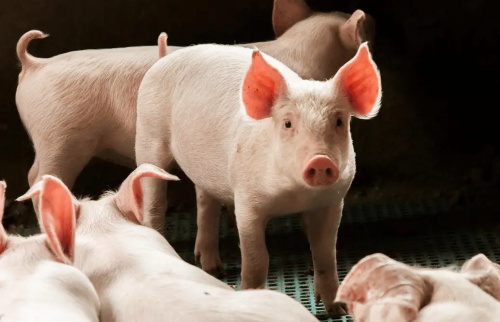The integration of modern diagnostic tools into traditional farming practices has significantly improved animal husbandry outcomes. One such technological advancement is the B-mode ultrasound (commonly referred to as B-ultrasound), which has become an essential tool in swine reproductive management. This article explores the practical applications, procedures, and benefits of using B-ultrasound machines in pig farms, particularly in sow reproductive health and production efficiency.

Applications of B-Ultrasound in Swine Reproduction
B-ultrasound technology is widely used in pig farms for a variety of diagnostic and monitoring tasks, incluindo:
-
Pregnancy Detection One of the primary uses of B-ultrasound in swine production is early and accurate pregnancy diagnosis in sows. The device allows farmers to identify gestation as early as 22–23 days post-breeding. Early confirmation helps streamline breeding schedules, reduces non-productive days (NPDs), and enables the culling or rebreeding of non-pregnant females without delay.
-
Estimation of Litter Size Beyond confirming pregnancy, B-ultrasound can also offer an estimation of litter size. While not as precise as later-stage evaluations or post-farrowing counts, it gives producers valuable insights into fetal development and helps assess the productivity of individual sows.
-
Identification of Reproductive Disorders The ultrasound is effective in identifying reproductive tract abnormalities such as:
-
Stillbirths
-
Mummified fetuses
-
Uterine fluid retention
-
Ovarian cysts
-
Follicular abnormalities Detecting these issues early allows for timely intervention, reducing the risk of reproductive failure or herd-level fertility issues.
-
Monitoring Ovulation and Follicular Development Ultrasound can also be used to monitor follicular growth, especially in breeding programs that rely on artificial insemination (AI). Identifying the optimal insemination window by observing follicular size and structure can greatly increase conception rates.
-
Measuring Backfat Thickness and Loin Eye Area In finishing pigs or breeding stock, ultrasound is used to measure backfat thickness and loin eye area—key indicators of body condition and carcass quality. This data helps adjust feeding regimes and selection decisions for breeding.

Operational Techniques: How to Conduct Sow Ultrasound Examinations
To ensure accurate readings and minimize stress for the animal, proper technique and handling are essential. Here’s a step-by-step guide to conducting B-ultrasound examinations on sows:
-
Animal Restraint Sows should be calm and either standing freely or lying comfortably in their pen. A restricted feeding stall or crate can be used to limit movement. Avoid stressful handling, as it can affect reproductive hormone levels and behavioral responses.
-
Probe Placement and Target Areas The probe is typically placed in two locations for optimal imaging:
-
The inner thigh area near the udder
-
The lateral lower abdomen, just behind the last nipple
Before scanning, apply a coupling agent (such as ultrasound gel or vegetable oil) to ensure proper contact between the probe and the skin. This enhances image clarity and reduces air interference.
-
Scanning and Image Interpretation During the scan, the operator slowly moves the probe while observing the monitor. In early pregnancy, a gestational sac appears as a dark (anechoic) area on the screen. As the pregnancy advances, fetal structures such as the spine, ribs, and heartbeat may become visible.
An experienced technician can identify:
-
A “black hole” or dark sac indicating a fluid-filled uterus (suggesting pregnancy)
-
Presence of fetal bones (echogenic structures)
-
Abnormal uterine content, indicating possible infection or loss
-
Safety and Comfort B-ultrasound scanning is non-invasive and does not harm the sow or the fetus. The procedure is painless, and with experienced handling, causes minimal stress. Each scan typically takes less than 2 minutes per animal, making it efficient for use in large-scale operations.
Advantages of B-Ultrasound in Pig Production
-
Improved Reproductive Efficiency Accurate pregnancy checks allow farm managers to make timely decisions about rebreeding or culling. This reduces the number of non-productive days, which directly translates to increased profitability.
-
Enhanced Genetic Selection B-ultrasound helps in evaluating body condition and reproductive health, aiding in the selection of superior breeding stock. It also assists in identifying underperforming animals early.
-
Early Detection of Problems Timely diagnosis of reproductive disorders can prevent long-term health issues in sows, reduce mortality in piglets, and improve overall herd fertility.
-
Cost Efficiency Though initial investment in an ultrasound unit might seem high, the long-term cost savings from improved reproduction rates, better selection accuracy, and decreased medication or intervention costs make it a worthwhile investment for any serious producer.
Case Example: Implementation in a Mid-Sized Commercial Farm
A mid-sized pig farm with 800 breeding sows adopted the use of portable B-ultrasound machines as part of their reproductive management protocol. The scanning began 22 days post-insemination and was repeated at 35 e 50 days to confirm and monitor fetal development.
Results over a six-month period showed:
-
15% reduction in the number of open sows at farrowing check
-
8% increase in farrowing rate
-
20 fewer non-productive sow days per month across the herd
-
Early detection of 25 sows with reproductive tract issues, enabling timely treatment or removal
This case demonstrated a clear return on investment, improved animal welfare, and streamlined farm operations.
Conclusão
B-ultrasound technology has revolutionized reproductive management in pig farming. From confirming early pregnancy to identifying reproductive disorders and assisting in body composition evaluation, its practical applications are vast. When used effectively, B-ultrasound improves accuracy, productivity, and profitability in pig farming operations. With proper training and regular use, it becomes an indispensable tool for modern swine producers aiming to maintain a competitive edge in the industry.
If you’re considering implementing ultrasound diagnostics on your farm, investing in quality equipment and staff training will yield long-term benefits and elevate the overall reproductive performance of your herd.